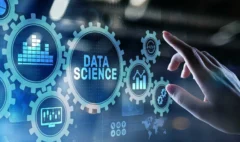All you need to know about Artificial Intelligence
July 11, 2019 2019-07-11 17:33All you need to know about Artificial Intelligence
All you need to know about Artificial Intelligence
What is Artificial Intelligence?
Artificial Intelligence is a method of making a computer, a computer-controlled robot or a software think intelligently in a manner similar to the human mind.
Goals of AI :
To Create Expert Systems − The systems which exhibit intelligent behavior, learn, demonstrate, explain, and advice its users.
To Implement Human Intelligence in Machines − Creating systems that understand, think, learn, and behave like humans.
What Contributes to AI ?
Artificial intelligence is a science and technology based on disciplines such as Computer Science, Biology, Psychology, Linguistics, Mathematics, and Engineering. A major thrust of AI is in the development of computer functions associated with human intelligence, such as reasoning, learning, and problem solving.
Out of the following area s, one or multiple areas can contribute to build an intelligent system.
s, one or multiple areas can contribute to build an intelligent system.
What is AI Technique?
In the real world, the knowledge has some unwelcomed properties −
- Its volume is huge, next to unimaginable.
- It is not well-organized or well-formatted.
- It keeps changing constantly.
AI Technique is a manner to organize and use the knowledge efficiently in such a way that −
- It should be perceivable by the people who provide it.
- It should be easily modifiable to correct errors.
- It should be useful in many situations though it is incomplete or inaccurate.
AI techniques elevate the speed of execution of the complex program it is equipped with.
Applications of AI
AI has been dominant in various fields such as −
- Gaming− AI plays crucial role in strategic games such as chess, poker, tic-tac-toe, etc., where machine can think of large number of possible positions based on heuristic knowledge.
- Natural Language Processing− It is possible to interact with the computer that understands natural language spoken by humans.
- Expert Systems− There are some applications which integrate machine, software, and special information to impart reasoning and advising. They provide explanation and advice to the users.
- Vision Systems− These systems understand, interpret, and comprehend visual input on the computer. For example, A spying aeroplane takes photographs, which are used to figure out spatial information or map of the areas. Doctors use clinical expert system to diagnose the patient. Police use computer software that can recognize the face of criminal with the stored portrait made by forensic artist.
- Speech Recognition− Some intelligent systems are capable of hearing and comprehending the language in terms of sentences and their meanings while a human talks to it. It can handle different accents, slang words, noise in the background, change in human’s noise due to cold, etc.
- Handwriting Recognition− The handwriting recognition software reads the text written on paper by a pen or on screen by a stylus. It can recognize the shapes of the letters and convert it into editable text.
- Intelligent Robots− Robots are able to perform the tasks given by a human. They have sensors to detect physical data from the real world such as light, heat, temperature, movement, sound, bump, and pressure. They have efficient processors, multiple sensors and huge memory, to exhibit intelligence. In addition, they are capable of learning from their mistakes and they can adapt to the new environment.
Task Classification of AI
The domain of AI is classified into Formal tasks, Mundane tasks, and Expert tasks.









